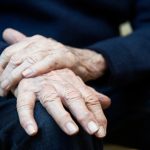Distinguishing Near-Falls from Daily Activities
Accidental falls are the number one cause of injury among senior adults. An individual’s risk of falling is directly linked to their frequency of imbalance and how capable they are of recovering. Many movement and gait disorders further increase the likelihood of imbalance episodes occurring. However, until recently, there was little direct evidence showing the relationship between imbalance and near-falls in older adults. Distinguishing near-falls from daily living activities would help show a concrete association, leading to enhanced detection and eventual prevention of falls.
Prevalence and Risk of Falls in the Elderly
Falls pose significant risks to older adults. A study was performed that documented and followed patients older than 65 who were admitted to a regional Level 1 trauma center after a ground-level fall. Of the 1,352 admissions, nearly half were classified as suffering from a major trauma. Twelve percent of the patients admitted died as a result of their injuries. Many of the patients that survived required further care; 51 percent were discharged to a skilled nursing facility and five percent of individuals were sent to in-patient rehabilitation centers. Within one year of their injuries, 44.6 percent of the patients were readmitted due to further health complications related to their original fall.
Wearable Monitoring Systems
Previously, data collected of near-falls in older adults was based on self-reporting. This method was inherently unreliable and likely resulted in an underestimated frequency of near-fall events. Many organizations have tried to develop more accurate testing methods to better collect data relating to movement and balance. Currently, the most promising technology takes the form of wearable monitoring systems that contain inertial sensors. A study was conducted to determine how the number and location of sensors used influenced the accuracy of diagnosing near-fall events.
Results of the study showed that the sensitivity and specificity of a predictive algorithm used to differentiate near-falls and activities of daily living (ADLs) increased when more sensors were used. The best performance was observed with a total of five sensors placed on the left foot, right foot, right thigh, waist and head. The algorithm made no false positive or false negative diagnoses and provided 100 percent sensitivity and specificity.
Versatile Research-Grade Wearable Sensors
APDM Wearable Technologies is dedicated to developing and commercializing best-in-class solutions for quantifying human movement with wearable technologies. The Opal sensor is the foundational technology in all of our solutions and has been used in a number of studies and scientific publications. With the Opal, you can create and customize a measurement system with as many sensors as you’d like. Contact us today for more vendor inquiries or to request product information.
Come visit us at the Congress of the International Society of Biomechanics, Biomech 2017, Brisbane, Australia- July 23-27 IABAP
http://journals.lww.com/jtrauma/Abstract/2014/02000/Long_term_outcomes_of_ground_level_falls_in_the.37.aspx
https://www.ncbi.nlm.nih.gov/pubmed/23367256
http://journals.plos.org/plosone/article?id=10.1371/journal.pone.0117018





